If you’ve ever struggled to know what the difference is between waterproof, water repellent and water resistant, you are not alone. In fact, one of the questions we get asked the most is always ‘is water resistant the same as waterproof?’ This article aims to debunk this, so, whether you’re in the process of buying a jacket, pants and trousers or shoes and boots, you can make the right decision for your needs. Whilst all of these will protect from water, the amount they will, and the saturation they can take differs dramatically. For example, water repellent items are designed to repel water, whereas waterproof materials are designed to create an impermeable barrier.
Manufacturers seem to often bounce water resistant and waterproof around a lot, but they’re not interchangeable and each of them has a big difference. One that, if you don’t know the difference may cause you a costly wardrobe malfunction in the outdoors. So let’s break down the difference between water resistant, and waterproof as well as water repellent. We’ll also look at waterproof and water repellent vs water resistant to see if one is better than the others.
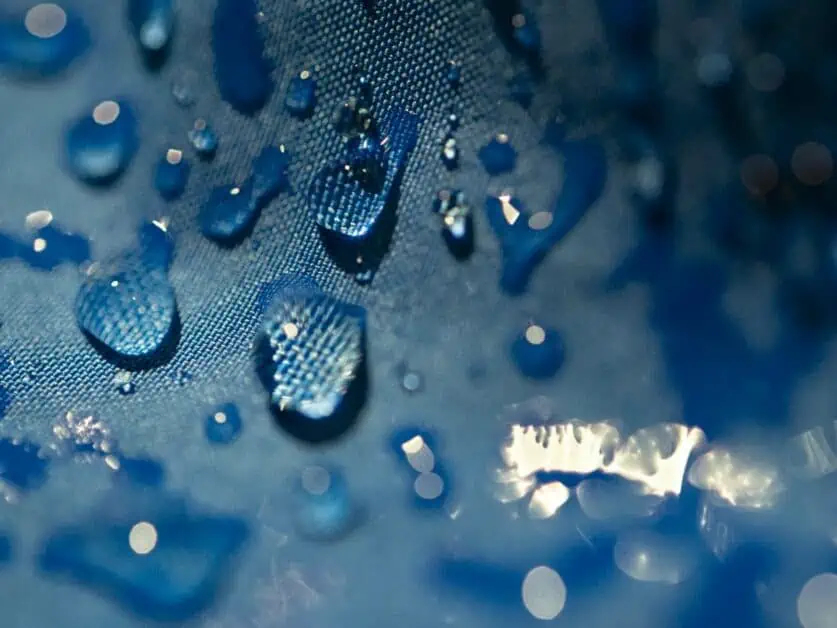
What Does Water Resistant Mean
A product that is marketed as water resistant will offer you the lowest level of water protection, and usually provides a lighter, more breathable layer intended for light rain. Sometimes the water resistance of a garment will come from the material it is created with – tightly woven technical fabrics can sometimes offer a level of water resistance without that being their main intention, because they create a barrier naturally to rain – and this can be increased by adding a coating to the fabric to help reduce the impacts of water.
So, what is water resistant in the context of outdoors garments and how does it work? Water resistant materials will resist water to a point, but after a long amount of exposure, will see the garment start to soak through – especially as seams or ‘weak’ areas such as zips and pockets will not be taped with waterproofing measures. In the outdoors, this means that a water resistant jacket will protect you from light drizzle or even a light shower, but if the weather takes a turn for the worse and the rain becomes heavier, you can expect the garment to not provide adequate protection from the rain. This is the main difference between waterproof and water resistant.
Water resistant garments are often the most breathable too, as they do not involve membranes or treatments in the same way that waterproof, or water repellent materials do. That said, they can also be lacking in wind proofing too – as waterproof treatments create an excellent barrier to wind. If you know you’ll be hiking somewhere where you just need light rain protection and no real wind protection, but just want to be covered, then a water resistant product may be all you need. One of the most asked questions is ‘does water resistant mean waterproof’ and it’s important to remember that it doesn’t. Water resistance is not waterproofing.
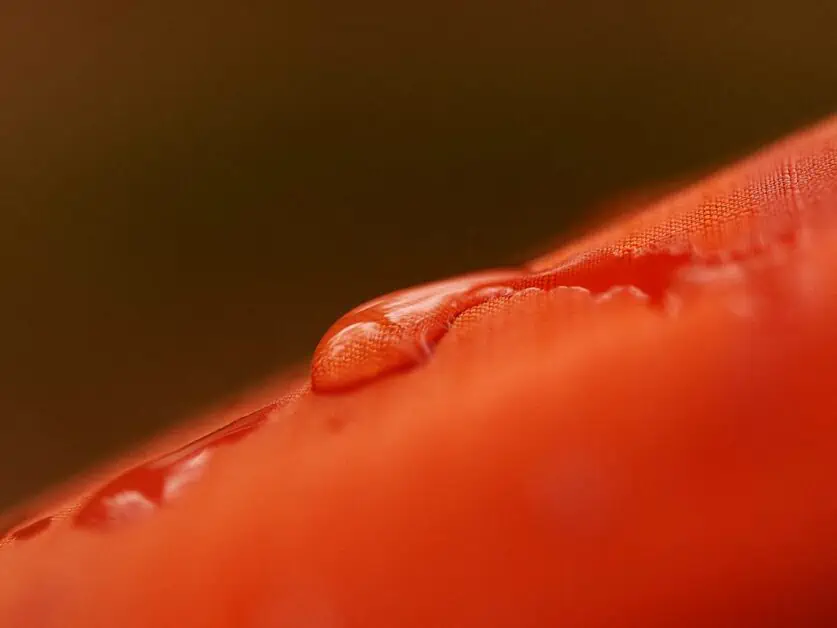
What Does Waterproof Mean
What is ‘waterproof’? In simple terms, a material is classed as waterproof when it doesn’t allow water to reach the skin or body from the surface of the garment. In terms of waterproof rain jackets, you’ll find a 2, 2.5 or 3 layer construction. You’ll find a waterproof membrane positioned between a face material (the layer that is exposed to the elements) and the fabric that sits next to the body and wicks moisture (though this depends on if it is a 2,2.5 or 3 layer). However, when we look in simple terms at waterproofing, you must keep in mind the circumstances you’re looking at – and in the outdoors, water can hit a waterproof fabric at a whole range of forces and pressures.
There is no specific requirement or standard without the outdoors industry and amongst manufacturers when it comes to how waterproof a waterproof fabric needs to be. There is also no standard for how much penetration a material can take. However, it is generally regarded and adopted that the US Militaries requirement of waterproof fabrics being resistive to at least 25 PSI or 16,700mm is standard.
Waterproof materials will give you the most protection from water out there, but it is also important to look at the garment you’re purchasing and the reality of the situation. If you’re looking at waterproof hiking shoes, for example, but know you are going to be hiking through deep pockets or rain, then opting for a high top pair of hiking shoes with rain pants as a combo will give you better weather protection than a traditional runner style. However, a runner style will be more appropriate in conditions where there is low level rain, hitting around the shoe, as opposed to being stood in surface water constantly that is above the level of shoe. This is the main thing that will start to determine waterproof vs water resistant boots.
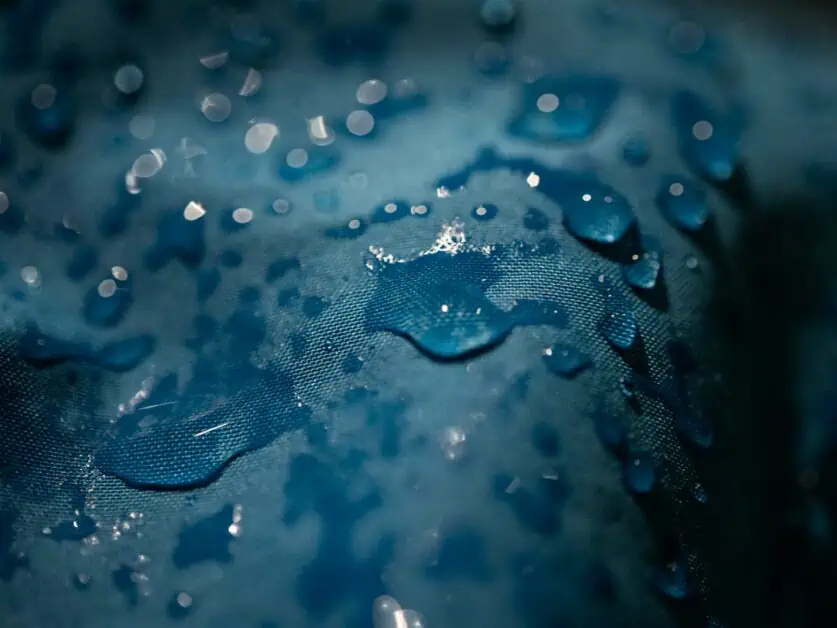
What Does Water Repellent Mean
If a material is water repellent, it is certainly going to give you better protection than an item that is water resistant, but it still isn’t to the same level as waterproof. If a garment, such as shoes, are listed as water repellent, it means that the fabric they’re made from will resist water. They will stay drier in damp conditions, and they can be great for everyday use. Some water repellent products you can even wear in moderate rain, but prolonged storms, extreme conditions and a lot of water exposure will allow water to permeate.
Generally, water repellent garments are coated with a synthetic material in a similar way to waterproof materials below, which stop liquid from entering the product and coming into contact with your body. However, this is not as hardy as fully waterproof fabrics as you likely won’t have things like sealed seams and zips. This is where waterproof vs water-resistant can really win out.
Water Resistant vs Waterproof vs Water Repellent – What is the Difference
Whilst the descriptions above should give you a good idea on the differences between water resistant, waterproof and water repellent, you may still be wondering, which would be better for you. The answer is it really depends on how you intend to use the product.
For example, if you’re looking at a rain jacket, the types of places you go outdoors should dictate whether water proof versus water resistant or shower resistant and water repellent would be best for you. If you know you’re going to spend most of your time in places where rain is a given, and heavy rain at that, then a fully waterproof rain jacket would be best for you. That said, fully waterproof materials can increase the price, the weight, packability and comfort you’ll experience. Especially if the DWR isn’t functioning as well as it could and not wicking moisture correctly from the skin. Whether a waterproof vs water resistant jacket is better, is completely dependent on the scenario.
If you’re looking for waterproof rain pants, you’ll notice that many brands offer water repellence in their soft-shell style trouser. This is great if you know you’re likely to encounter light to medium rain and winds – and these can provide excellent protection, as well as providing better comfort, breathability and reducing the amount you may need to bring on a backpacking trip for example (as they’re generally quick to dry too). In this scenario, fully waterproof rain pants may be overkill for you, but if heavy rain is a given, combined as well with high winds, then a pair specifically fit for purpose will make a huge difference.
Likewise, if you’re looking at backpacks, you’ll see those that are waterproof come with extra layers and rain covers to keep them that way. If you know that your activities outdoors will take you to places without as much rain, a pack that is water repellent may be all you need and provide an adequate level of durability. As with our earlier example of waterproof hiking shoes also – you may want to consider just how durable your shoe needs are, and whether a high top shoe would be better fitted for purpose.
Ultimately, using the descriptions above of the differences between waterproof, water repellent and water resistant and looking at your intended scenarios can help you decide what is best for you, and if you need specific items for different occasions.
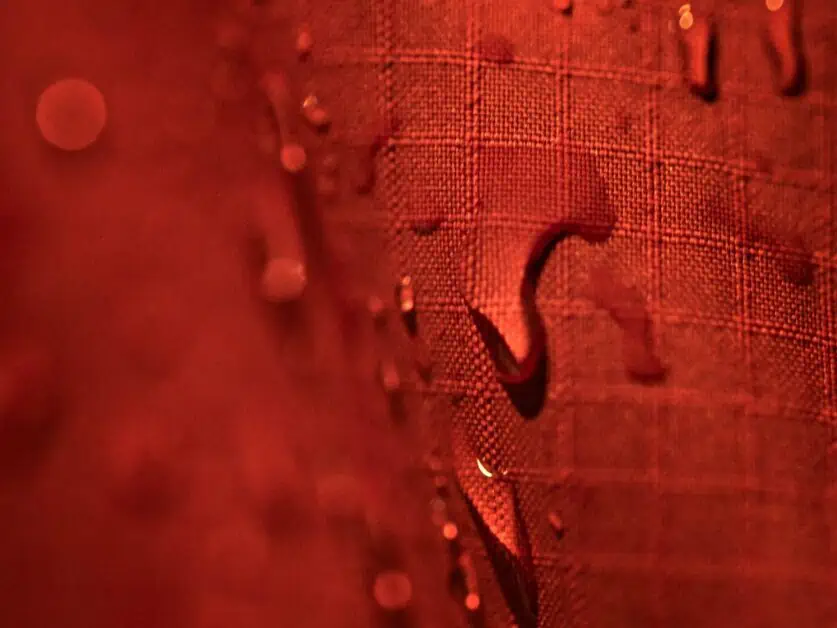
Types of Water Resistant Materials, Technology and Brands
Synthetic materials like polyester, satin, nylon and pongee at their base level provide some protection from the rain and water. They have a natural resistance unlike something like cotton for example. In fact, you’ll generally find a lot of outdoor clothing made from tech fabric contains some kind of water resistance. They’re more intended to allow the fabric to dry quickly once it has been exposed to water for a short period, or light rain, not for long and continued constant exposure and contact with water. This is one of the main differences when looking at water resistant vs water proof.
Ripstop nylon is incredibly hard wearing and has been used for a long time. It is used very frequently across the outdoors industry for making products that require very durable finishes, such as backpacks, tents, waterproof jackets and a whole lot more. This in itself is water repellent, but it can be furthered and become fully waterproof with specific treatments.
Types of Water Repellent Materials, Technology and Brands
You’ll find that a lot of soft-shell trousers intended for general hiking, as well as soft shell jackets etc. have a fairly good level of water repellency. Water repellent materials are often more stretchy than fully waterproof materials, and therefore have more ‘give’ to them when it comes to comfort and moveability. You’ll find technologies like ISOFLEX, which is an active stretch fabric with a 94% polyamide/6% elastane composition being used. There’s also brand specific technology too – for example, Columbia use Omni-Shield, their in house design for some of their water repellent products. These are just a couple of examples and there are many more out there, with some being brand specific.
You’ll generally find that a lot of the same materials are used in water repellent gear as they are in waterproof gear: for example, polyester or polyamide with a DWR finish. However, you’ll find that areas which can be prone to saturation, such as zips, seams and any area with a join aren’t fully waterproofed. This is one of the main differences between waterproof and water repellent.
These fabrics are generally stretchier and more breathable and can be worn on longer treks where you can expect your clothing to dry out more quickly and can cut down on the amount of gear you need to bring on a longer hike, trek or backpacking trip. There’s a reason you’ll generally see most soft-shell layers intended for the majority of outdoors use constructed in this way.
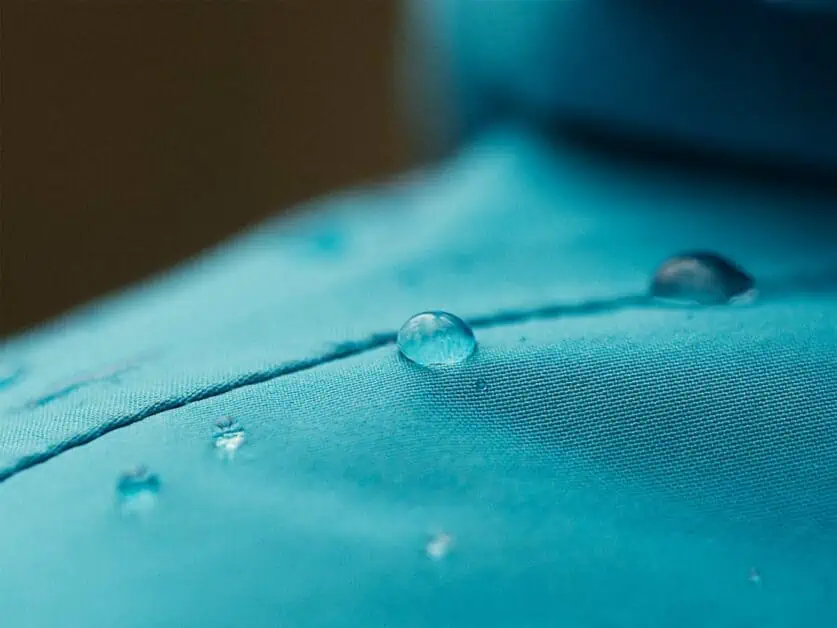
Durable Water Repellency (DWR)
You may have noticed DWR mentioned above or in listings for waterproofed products. But what does it mean and what impact does it have on the difference between water repellent and waterproof? Durable Water Repellency is vital to keeping waterproof fabrics, waterproof, or adding an extra level to something that is water resistant and making it water repellent. A DWR coating is often applied to a lot of water repellent and waterproof materials to help water bead off and to avoid permeation on the surface, which can prevent moisture wicking. Without this working correctly, it can affect the breathability of a fabric and can lead to you feeling very sweaty. This can be prolonged by using a treatment designed to protect, repair and reinvigorate DWR such as Grangers Performance Repel Plus. The difference this makes between waterproof vs water repellent, is that it allows fabrics that otherwise wouldn’t be waterproof to stand up to general rain, whereas it’s use on waterproof fabrics is to keep them doing their job.
Types of Waterproof Materials, Technology and Brands
There are a variety of different types of waterproof materials on the market right now, with various technologies being used by different brands. Below, we’ve outlined some of the most common ones you’ll come across.
- Polyester: PVC can withstand harsh conditions and provides a fully waterproof layer. You’ll commonly see it used for rain gear. This is tightly woven together to create its water resistance. When combined with a waterproof membrane, DWR or some other kind of specific waterproofing treatment, it becomes completely waterproof. You’ll see polyester extensively used on jackets that are waterproof.
- Nylon: Nylon itself is not waterproof until it’s treated. Though once treated, nylon creates a fantastic barrier to rain. Nylon is often used as a base material by outdoor brands and then treated or coated to create a strong weatherproof layer.
- ePTFE fabrics/Teflon: You’ve likely heard of Gore-Tex when looking at waterproof or water resistant products, and this technology creates a breathable fabric layer. Gore-Tex is a brand who don’t create a finished product, but instead license their technology for use in other products. It is a polytetrafluoroethylene (ePTFE) membrane that is stretched to a specific dimension that prevents liquid from entering and allows vapor to escape. You may also be familiar with this fabric being referred to as ‘teflon’. Gore-Tex have a whole range of different technologies available – more on this here.
- Nanospinning: This is a technology adopted by The North Face for their Futurelight gear – it is where nano sized fibers are created and allows for remarkable breathability, weight and packed size whilst providing strong waterproofing.
- Pertex: Pertex or Pertex Shield as it’s also known uses a 3-layer laminate system to create extremely durable windproof and waterproof layers, it’s also very breathable and is intended for use in extreme conditions and prolonged wear. It’s great in mountaineering, where you may expect to be working up quite a sweat and is great in snow too.
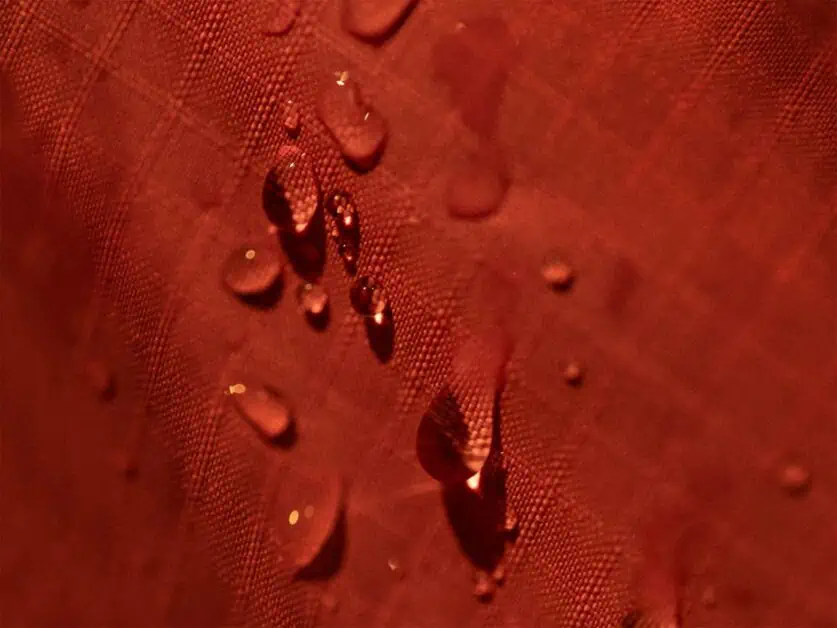
Price
When looking at the waterproof and water resistant trade offs, does price actually make that big a difference? The answer is yes, but it generally isn’t related to whether the product is waterproof or water resistant (though that isn’t always the case of course). You could easily think given waterproof is hardier to rain than water resistance, that this would make all waterproof products sell at a higher price point.
However, regardless of whether you’re looking at water repellent vs waterproof, the price point is generally insular to each ‘category’ so to speak. For example, you can easily find that a technical pair of soft shell water repellent trousers may far outweigh the cost of a fully waterproof pair of rain pants. You may also find that a pair of water resistant hiking shoes are at a much higher price point than a pair of fully waterproof shoes or boots. This is generally down to brand names and technology used.
There are plenty of products on the scale that offer competitive pricing on all levels, so price shouldn’t be the deciding factor between whether you can find a product that is right for your needs. For example, if you’re looking for a rain jacket, don’t be fooled into thinking that something that is less durable against rain will be cheaper – it isn’t and shouldn’t be. You can confidently buy something fit for purpose within your price bracket by looking at what use you need it for the most rather than its water resistance level.
Conclusion – Which is Better?
There seems to be a lot of confusion about what the difference is between waterproof and water resistant and waterproof vs water repellent. It’s not hard to see why as there is a lot of miss information out there, and a lot of information fails to get the difference right between waterproof and water repellent. We hope this article gives a more detailed answer to what the difference between waterproof and water-resistant is and if waterproof and water resistant are the same or not.
Which is better? This really depends on your usage – as not one is better if not used in the right circumstance. Answering whether waterproof or water resistant is better will depend on what you plan to do in the outdoors. You may find, if looking for a pair of pants, that water resistant and water repellent will suit you for the majority of purposes. Whereas if you’re going to spend a lot of time in the rain or wet places, then a fully waterproof garment is much better and suitable for your needs.
Always look for what the manufacturer says – as they should list whether a product is waterproof, water resistant or water repellent, and if it includes anything like a DWR coating or how many layers and what this layering system entails. Likewise, we always list as much of this information as possible in our buying guides, to help you make the best decision possible for your needs.
Disclaimer: This article contains Affiliate Links. You won’t pay any more for buying through these links, but we may receive a commission from any purchases made through them. As an Amazon Associate, I earn from qualifying purchases. If you choose to support us by buying through our links, we thank you as it helps us to continue providing the resources we do to help you enjoy the outdoors more!
